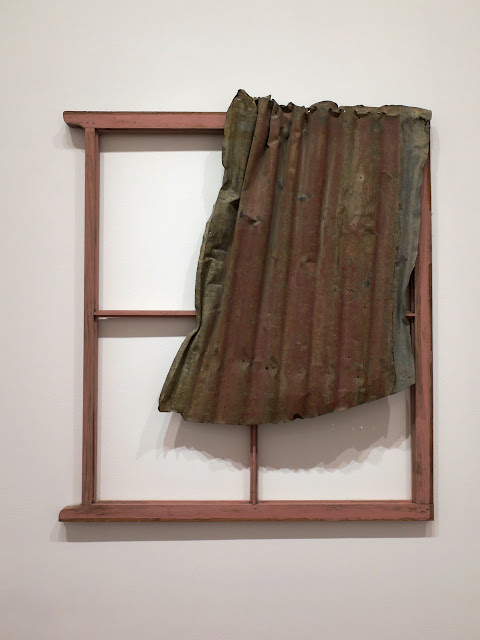For those of you who have a chance to visit Melbourne during the next three weeks I would like to strongly recommend an exhibition at the NGV Australia gallery in Federation Square.
The exhibition "Found and Gathered", features two women artists, Rosalie Gascoigne (1917-1999) and Lorraine Connelly-Northey (Born 1962). Many Sogetsu Ikebana practitioners will know that the late Rosalie Gascoigne studied ikebana with Norman Sparnon in the early 1960s and went on to develop a unique style of 'found object' sculpture. In 1982 she was the first female artist to represent Australia in the Venice Biennale of that year.
Lorraine Connelly-Northey's "...work is inspired by her maternal... (indigenous) heritage..)." She uses found objects which she re-works to reference traditional indigenous cultural objects. (NGV curatorial signage)
I found these works quite very powerful in their symbolic representation. Also, they are extraordinary in the way the artist has created soft textural impressions from stiff and harsh materials. To me this exhibition is very compatible with the Sogetsu perspective because of its focus on line, space, texture and a restricted colour pallet.
* * * * *
Some weeks ago I made a couple of ikebana arrangements using Strelitzia from the garden because it was coming to the end of the flowering.
Three weeks later there was only one Strelitzia flower left in the garden and we were about to have a heavy down-pour of rain.
The spherical ceramic vase, which I bought in 1972, is by the late South Australian ceramic artist Don Jones. I clearly remember being drawn by the sight of this vase, from a distance of many metres. It remains a favourite.
Greetings from Christopher
29th January 2022






No comments:
Post a Comment